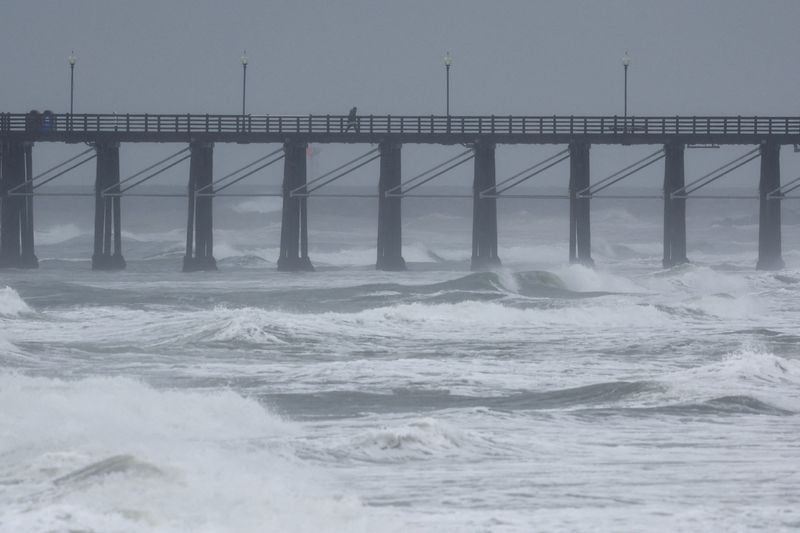By Nicole Jao
NEW YORK (Reuters) - A pair of atmospheric rivers that drenched California in recent weeks will bolster the state's hydropower systems by filling reservoirs and building up snowpack levels after a prolong drought cut supply, the state's Department of Water Resources (DWR) data showed.
As of Saturday, the state's reservoir storage was at 118% of its historical average, according to the DWR. In northern California, Lake Oroville, its largest reservoir, was at 78% capacity.
Statewide, snowpack, which melts and fills up water reservoirs during the spring, climbed to 76% of historical average as a result of the storms akin to rivers in the sky that dump massive amounts of rain, which occurred between Feb. 4 and Feb. 7. That represented a hike of more than 20% from Jan. 30.
Reservoir and snowpack and levels are good indicators of future hydroelectricity supplies, however, other water uses such as agriculture, wildlife and industrial operations are usually prioritized over electricity generation.
"Given better conditions, we anticipate hydro resources to be stronger this year," said Stacey Shepard, spokesperson of California Energy Commission, which is responsible for planning the state's energy systems.
Whether the state will have sufficient resources to meet extreme conditions, such as a west-wide heat event, is still a concern, Shepard said.
California is the fourth-largest electricity producer in the U.S. and hydropower is a key component in its transition to cleaner energy sources as it aims to become carbon neutral by 2045, but its contribution to power supply has declined in recent years due to lack of available water.
Last year, hydropower accounted for around 14% of the state's electricity generation, down from 17% in 2019, according to latest data from Energy Information Administration (EIA). It had fallen to just 6% in 2020 due to drought conditions.

Hydropower is expected to remain at around 14% of California's electricity generation or 29.95 million megawatt hours in 2024, the EIA's latest Short-Term Energy Outlook report showed.
California relies on natural gas-fired plants during the spring to provide reliable power generation when renewable sources are intermittent. It generates around half of its electricity from natural gas sources.